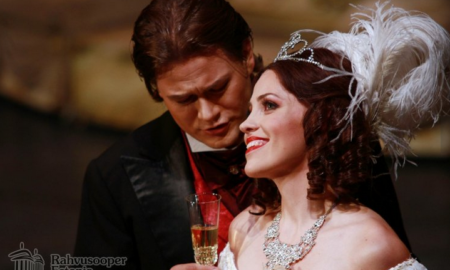Folk dance is not something I knew much about growing up. I’ve discovered that a lot of teens in Europe study traditional partner dancing in preparation for their graduation balls – a habit that does not cross over into the US. Sure, I took dance classes as a child (e.g. ballet, tap, jazz) that were meant to entertain an audience but these had a very different relationship with culture or history.
I got a crash course in folk dance at the Sabatants festival last month. In the organizers’ own words, “Sabatants is a traditional dance festival that honours traditions and spreads the joy of dancing.” It normally happens once a year in the spring, but in 2018 a second festival also brought folk dance fans to Tartu in autumn. Things that I noticed or that surprised me about the local folk dance scene include:
1 The crowd has a sense of humor. Before this experience, I thought of folk dancing as a serious subject, done either by older generations fighting to keep the tradition alive or by children forced by their parents to participate. This idea was challenged the moment I walked in the door by funny signs leading the way to the top floor location. This was a place where traditions could actually be enjoyed more thoroughly by not taking everything too seriously.
2 Folk dancing is an all-ages affair. I had expected the age range to skew olde., but in reality, I would have a hard time estimating the average age of the attendees. There were men and women dancing with babies on their hips. There were parent-and-child musical acts. There were teens, adults, and older generations on the floor at any given moment – in one circular dance I held hands with a girl of maybe seven on one side and a middle-aged man on the other.
3 Anyone can be partners. One of the things that has often kept me out of partner dancing in the past is the strict division of gender roles and requirement of a partner. In this crowd, there were certainly couples who danced together, but it was just as common to see two women circling the floor together as it was to bump into a mixed gender pair. There are a variety of arm positions to choose from for the comfort of the couples. Many of the experienced dancers also seemed eager to bring newcomers into the group. The organizers encourage this, saying “There is always something new to learn from new partners, and it’s a good way to share your own experience with others.”
4 It’s a great cardio workout. Some dances shuffled around the room with small steps, while other songs inspired a barefoot blond to leap across the floor, twirling his partner in dizzying circles. No matter the pace of the current dance, I found myself breathing heavily after any session on the floor, but the moves themselves seemed accessible for all levels of fitness. Stamina simply dictated how often the dancers needed a break.
5 The instruments are unique. Every time I thought I saw an instrument that I recognized, I realized it was a slight variation. There are local versions of what I know as an accordion, a fiddle, a large cross-between-a-slide-guitar-and-a-xylophone (a zither?), and a small set of bagpipes. Quite often, the stomping feet on the dance floor also added the percussion element to the music being played.
6 It’s a very welcoming community. Jaan Sarv, who co-organizes Sabatants with fellow musician and dancer Leanne Barbo, told me that “There are no prerequisites. You don’t have to be a dancer. It’s for everybody.” One place that spirit is evident is in the non-existent dress code: jeans and a T-shirt? Sure. Flowing colorful skirt? Why not? Just make sure you bring shoes that weren’t worn outside…but socks or bare feet are also fine in a pinch. In addition to this atmosphere of acceptance, integration is built into many of the dances. You might change partners fifteen times or more in a single song, putting all dancers face to face with anyone who decides to join in. The more experienced members show an impressive level of patience with any newcomers attempting to keep up with the steps.
7 The connections are international. Sabatants incorporates plenty of Estonian folk dancing but also brings international communities into the mix. Performers from Lithuania, Poland, Norway, Hungary, Udmurtia and Estonia rounded out the lineup of musicians and dance teachers. I chatted with festival attendees from Germany, Australia, South Africa, and America and as close as the surrounding Estonian regions. While different folk dance traditions have their own styles and quirks, there was a lot in common across these cultures to establish a bond between the room.
8 I can’t wait to learn more! The main lesson I took away is how much the welcoming environment made me want to be a part of the folk dancing scene. I now find myself searching event calendar for concerts and joining social media groups to search for local dance nights. Despite warnings from guidebooks and culture shock workshops always preparing outsiders for the “cold and closed off” local personality, I have found the folk dancing community (and a majority of Estonian people in general) to actually be the exact opposite.

